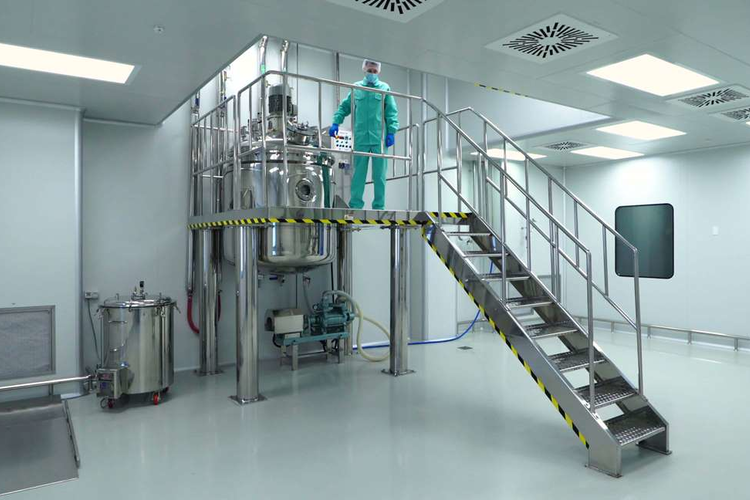What Are Industrial Cleanrooms & How Are They Used?

An incredibly diverse range of industrial products, processes, and procedures require an environment where specific variables must be carefully controlled to ensure proper safety, accuracy, product yield, and quality throughout the manufacturing process. Undesirable environmental conditions can lead to adverse process outcomes, which are typically accompanied by rework time and other negative cost implications.
Cleanrooms create an environment where specific high-demand and precise operations can be carried out. These rooms, once limited to high-tech semiconductor, university research, and life sciences laboratories, are now being employed in other sectors, including the automotive, food production, and biotechnology industries.
Definition of a Cleanroom
A cleanroom may be defined as a specially engineered and carefully designed enclosed area within a manufacturing or research facility. These rooms allow for precise control, monitoring, and maintenance of an internal environment.
Traditionally, cleanrooms were primarily used to limit contamination such as dust, vapors, microbes, fibers, and skin flakes or to contain biological hazards. However, they are now also commonly used to regulate other properties, including:
- Temperature
- Humidity
- Airflow
- Filtration
- Pressure
Each room requires a different level of cleanliness depending on the particular industry and application. While some rooms offer sophisticated designs for situations in which they must meet stringent standards, others may be designed to perform simpler functions, or offer portable solutions.
To differentiate between various cleanroom requirements, the ISO 14644 specification categorizes cleanrooms into nine different classes, with Class 1 possessing the cleanest air quality with the least amount of particles, and Class 9 having the least stringent cleanliness standards.
For example, nanotechnology and precision electronics require tight controls on the size and amount of air particles allowed in the cleanroom. Temperature, humidity, and electrical conductivity levels are among parameters that must also be regulated. For this application, a Class 1 cleanroom is typically required. On the other hand, for certain scientific instruments, such as coordinate measuring machines (CMMs), the room may only require air quality that is slightly above average.
Where Are Cleanrooms Commonly Used?
Electronic Part Production
Static forces, electromagnetic interference, temperature, and humidity can directly affect the quality of electronic products. Cleanrooms are crucial in this industry to minimize errors and reduce operating costs. Electronic cleanrooms are usually within the Class 1-to-6 range.
Biotechnology
The biotechnology field continuously handles sensitive fluids, organic matter, and live cells. The slightest contamination from any unwanted source can lead to decreased cell viability rates and inaccurate test results. Cleanrooms in the biotechnology field are usually specified between ISO Class 5 and Class 8.
Life Sciences
Similar to the biotechnology field, the life sciences industry stores and manipulates fluids and organic matter containing cells that are highly sensitive to external contamination. Pharmaceutical and other life sciences applications may also handle dangerous chemicals and compounds. Cleanrooms in the life sciences field are also specified between ISO Class 5 and Class 8.
Food Manufacturing
Cleanrooms have been adopted by the food manufacturing industry to maintain sanitary environments, assisting manufacturers in the production of products that are fit for human consumption. ISO classes for cleanrooms in this industry differ widely due to the varying sensitivity of different food products to contamination.
Automotive
The automotive industry has evolved significantly since the introduction of the first commercially available vehicle. Modern vehicles consist of sensitive circuitry and computer components that may be easily damaged by undesirable environmental conditions during the fabrication process. Cleanrooms in the automotive industry are usually between Class 6 and Class 9 depending on the part being manufactured.
Proper Steps for Entering and Working in a Cleanroom
The methods for entering cleanrooms vary by industry and the ISO classification of the room. However, the first step usually involves personal preparation. This includes ensuring that products such as cosmetics, hairspray, perfumes, or other potential contaminants are not worn prior to entry. Additionally, items that can shed particulates, such as pencils and cardboard, should not be carried into the room.
Appropriate attire must also be worn in accordance with the cleanroom classification; This may include gloves, masks, caps, smocks, booties, or coveralls. Consideration must also be given to garments worn under the cleanroom garb. Skirts, short-sleeved shirts, and shorts are usually not acceptable.
Once in the cleanroom, proper protocols must be observed. Workstations and apparel should be clean at all times. For highly sensitive applications on the more strictly monitored lower end of the ISO number classification scale, slow and even movements may be required since rapid or jerky movements can shed particles.
Protocols must also be strictly adhered to when exiting the cleanroom. All cleanroom garb, except launder-able gowns, should be disposed of according to established rules upon exiting the cleanroom.
Cleanrooms have proven to be a valuable asset to numerous industries. It is, however, important to be familiar with the various cleanroom classifications to ensure that room functions as intended for the given application.

